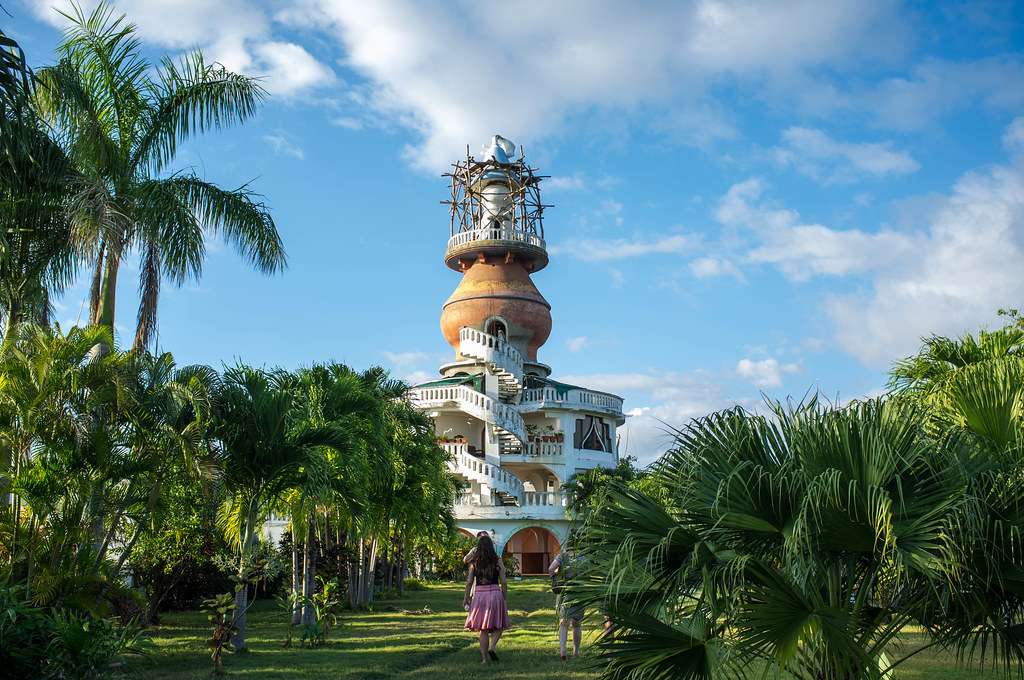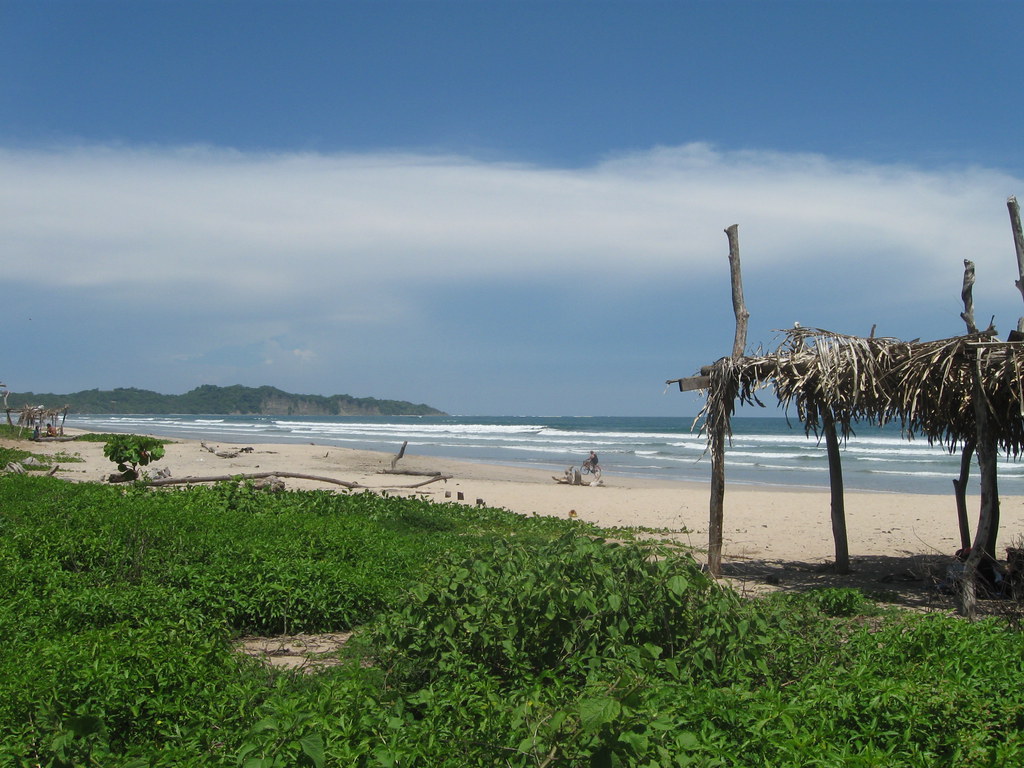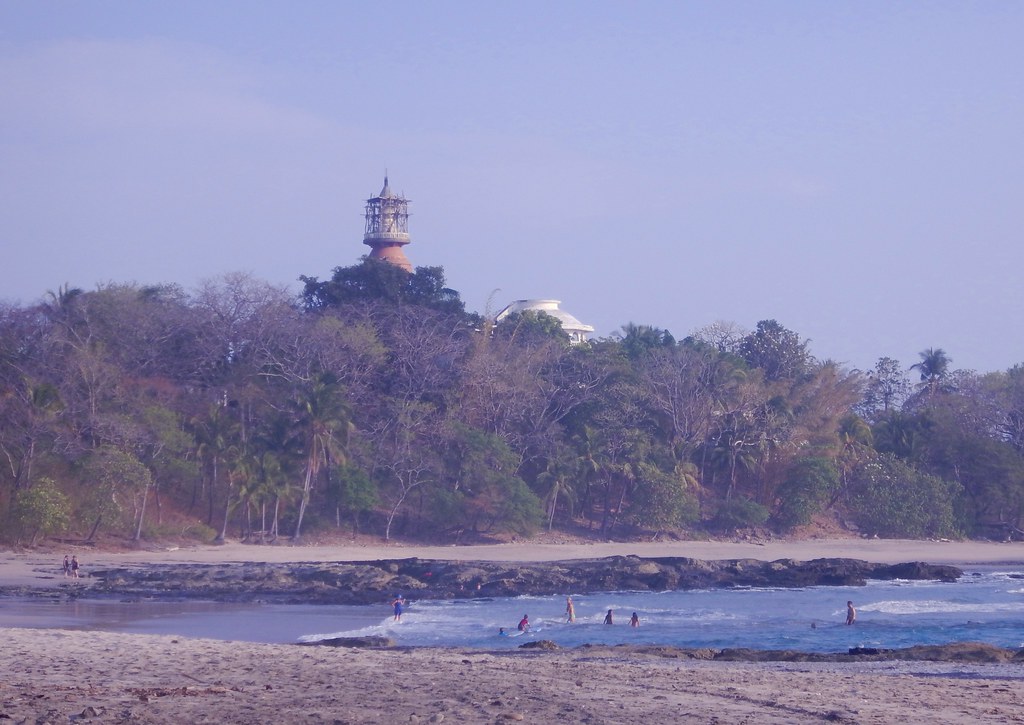14-02-2020
Costa Rica: Nosara, a particular destination
Arturo Silva Lucas | Alba SudResidential tourism in Guanacaste has been overwhelming and has led to a long history of conflicts. However, there are some nuanced and not for that less contradictory local processes, more open to the discuss their development strategy. Nosara is one of these cases.

Crédito Fotografía: Nosara. Imagen de Will McNelis, bajo licencia creative commons.
Throughout the entries to this blog, an effort has been made to highlight the less publicized side of the predominant tourism model in the Costa Rican province of Guanacaste. This model is characterized by the abrupt change in land use and ownership that has in the residential segment the main bait for the attraction of tourists and real estate investments in coastal territories.
The angle of interpretation that has been used is of territoriality. From this perspective, the territory is conceived as a result of the social interactions that occur in it. This frame of reference is key to understand the application of territorial policy. Such is the case of changes in land use, the control of natural resources such as water, the relationship between local inhabitants with new residents, the labor market and the role of public institutions.
Following this angle of interpretation, in this opportunity, the coastal district of Nosara, located in the canton of Nicoya, is analyzed. Currently, the entry of a new building regulation statue that considers local ecosystems is being discussed. The discussion that is taking place opens a door to understand how this destiny has been constituted, to underline the specific characteristics of Nosara. Although the article focuses on this specific case, the need arises to build a bridge with the rest of the province. This article seeks to “provincialize” Nosara, in order to understand that despite its particularities, Nosara cannot be analyzed outside the territorial logic that dominates Guanacaste.
A particular destination
The district of Nosara is a particular tourist destination. Located 260 kilometers from the national capital and 124 kilometers from the provincial capital Liberia, it takes between 6 and 4 hours respectively to arrive from one place or another. If the trip is made from the national capital it is through the bridge that crosses the Tempisque river and if it is accessed from the provincial capital it is through ballast streets that line the Pacific coast. In Nosara also operates a small airport since the late 1970s, but this conveyance is mostly used by foreign tourists.
The district is constituted by 20 communities in 134 km². It’s more important coasts are Guiones Beach, ideal for surfing; Pelada Beach, especially suitable for snorkeling, and Nosara Beach, the main investment, commercial and population agglomeration niche. According to the last census of the year 2011, its population is approximately of 5000 inhabitants.
Nosara becomes a tourist destination in the 1960s, when a small number of U.S. citizens from the state of Connecticut found ideal conditions to visit or reside in the area. Historically, Connecticut enjoys the highest per capita income and living standard of the United States. Since then, Nosara is conceived as a settlement of americans with similar patterns of leisure and use of free time, proper to individuals with high economic and social capital. That first migration of americans caused Nosara to have an evolution at its own pace that was going to guide the development of the district. A more independent development, although not totally different from other coastal investment niches in Guanacaste.

Source: Frode Bjorshol, under licence of creative commons.
According to the Nosara Civic Association (NCA) [1], many years before the provincial real estate explosion happened in the early 2000s, the first major residential project was planned in the 1960s. Known as the "American Project", the project was born by the initiative of Allan Hutchinson, who acquired 890 hectares of land planned to build residences, a resort hotel, golf course, tennis club, horseback riding trails, commercial section, public services as well of preservation of wildlife spaces. Eventually, the project was never concluded, and the initiative was blurred between offshore subsidiary companies, lack of investment capitals and some of the properties were distributed among Costa Rican legal firms. Currently, the ownership of some of these properties are being disputed between the NCA, the Municipality of Nicoya and the Nosara Integral Development Association (NIDA).
Nosara is also known for being the only coastal district in Guanacaste that has proposed administrative independence from its municipality. On June 3, 2018, a plebiscite was held to vote on whether or not the district should create a District City Council. This is a legal figure created so that communities can manage and invest their financial resources independently from the rest of the canton. Nosara is the district that economically contributes the most to the canton of Nicoya. The NIDA, promoter of the plebiscite, considered that the municipal government did not meet the needs of the district and a centralized administration could facilitate the investment in communal projects in all 20 communities. The district voted against administrative independence.
Finally, unlike other provincial coastal tourist destinations, where night activities, bars, casinos, alcoholic beverages have greater resonance, Nosara is associated with activities linked to physical and mental well-being. For example, the practice of recreational surfing, yoga and pilates studios, organic food restaurants, martial arts, among others. This does not mean that there is no nightlife, but in the collective narrative the image of Nosara is a place that attracts a visitor profile according to these activities.
These three peculiarities make Nosara enjoy a remarkable singularity with respect to the rest of the province. The prominence of resident foreigners since the 1960s precedes the massive migration of the residential tourism boom of the 21st century. This made it easier for these new residents to have more incubation time and therefore organizational forms already rooted in the district's present. This historical root, which already has more than five decades, allows to recognize in Nosara a relatively autonomous growth than in the rest of the canton, which largely explains the pretension of administrative emancipation proposed in the referendum.
At the same time, the social origin of that first migration brought activities related to physical, mental well-being, incorporating basic notions of socio-environmental balance that are maintained until today. But as it will be explained below, that doesn’t mean that there are no conflicts.
Recurring problems
Similar problems to those seen in other coastal communities, such as in the labor market or in water management, appear in Nosara. Regarding the first one, a conversation was held with a Costa Rican resident who prefers to remain anonymous to avoid problems with employers and neighbors. This person alleges that even when Costa Ricans from other regions of the country arrive in Nosara, professionals in yoga, pilates or cooking, there is a contracting bias based on nationality. For this person this does not respond to a feeling of rejection to the Costa Rican national but is based on the fact that most businesses are owned by americans and europeans, which leads to a closeness and familiarity among expatriates. About this, this person states:
“There is discontent of people who, like me, have training in activities very typical of Nosara. But there is that invisible wall ... that topic; that is not discussed either; that since we are not from another country it is always a little bit harder. I don't think it's because the market is saturated, but I think it's because the issue of work in Nosara is very particular.” (Personal communication, January 12, 2020)
The same informant emphasizes that, as regards to the labor market, the population is divided into three easily recognizable segments: the Costa Rican born in Nosara, the one that comes from other parts of the country and the foreign resident. In his view, between the first two is where there is more friction, because there is an implicit competition for the same jobs.

Brobson, under licence of creative commons.
The construction of community identity, as well as includes can also exclude. From the approach of community social psychology, the researchers Solís and Zúñiga analyzed the processes of community participation and organization in Nosara, when dealing with drought and conflicts that result in the satisfaction of water access [2]. The methodology used was that of Participatory-Action-Research in five communities of the district.
Among the conclusions, apart from highlighting the historical institutional abandonment, they emphasize in the idea of an “absent community” as a consequence of the lack of district coordination in water management. It’s a phenomenon linked to the perception among the native population of the existence of “another community”, made up of resident foreigners, from the United States and Europe, who enjoy immunity when, for example, managing water, as evidenced by the existence of illegal wells in private properties.
In the testimonies collected in the investigation it’s mentioned that while the communal water management of native populations must adhere to the principle of delegation with the National Institute of Aqueducts and Sewers (AyA), in private projects there is an absence of institutional control of the extracted water.
The new construction regulations in Nosara
According to a study done by the University of Sydney in 2017, Playa Nosara and Playa Guiones are the first and seventh places in the world respectively that meet the conditions for a coastal real estate explosion [3]. This study places Nosara within the territorial logic that characterizes real estate tourism development in Guanacaste. The regions that experience great real estate pressure put the conflict between the interest in placing residential investments and the regulations related to the use and care of natural resources.
The new building regulation bill seeks to create a buffer zone with the Ostional National Wildlife Refuge by regulating all new constructions carried out in the district. According to the newspaper Semanario Universidad between 2017 and 2018 the request for new construction permits increased by 42% only for Nosara. The new regulation takes special consideration of the7 kilometers proximity with the Ostional National Wildlife Refuge, main nesting site for up to 180 thousand sea turtles throughout the year, according to the National System of Conservation Areas (SINAC).
Among the environmental considerations, there is the possible disorientation of sea turtles caused by the light of new real estate projects, as well as ensuring the sustainable use of aquifers, estuaries, mangroves and mouths of estuaries up to 1 km in from the sea. In all new areas of construction it is intended that the new buildings do not exceed 9 or 12 meters high depending on the distance from the Refuge, also only in 50% of the lot will be allowed to build, the constructions must have residual water treatment and all lighting should point to the floor or walls.
The new building regulation is promoted by the NCA. In accordance with its statues, in a local podcast the NCA advocates for sustainable growth, which seeks a worldwide model coastal development in Nosara, as it is stated on its website. In addition, they argue that this is the third version of the document, all versions have gone through open calls to the public.
The voices against the new regulation bill come mostly from the real estate sector. Both foreign and national new residents in Nosara, as well as Costa Rican politicians who have backed the demands of the sector. All the arguments emphasize that regulating the sector would imply a slowdown in the local economy, alleging lack of transparency in the process and technical criteria. Let's see some examples.
Stated in a local podcast, the president of the Chamber of Commerce and Industry of Nosara (CCIN), Jeff Grosshandler, believes that regulating the real estate sector will affect property owners. It will also lead to increased property value as demand from potential investors decreases. This, he argues, could lead to a gentrification process that eventually will accentuate the differences between various social groups in the district. He emphasizes that although the document was written with advice from SINAC it lacks technical criteria and was never socialized to the rest of the district.

Hmmlargeart, under licence of creative commons.
Daniel Schuster of the CLC Global firm, in charge of public relations of the CCIN, told the provincial newspaper La Voz de Guanacaste in its edition of September 4, 2019 that “the existing regulations and the lack of water in Nosara already are responsible for regulating the real estate market. ” Unreliable statements, to our knowledge, since the lack of water in Guanacaste has never been a limit for real estate investment. Proof of this are that the investment cycles were only slowed by the global economic crisis of 2007-2008, as well as conflicts over water in many coastal communities.
Finally, former legislator Otto Guevara Guth interceded in the Nicoyan municipal council in opposition to the new regulation bill and has promised to take the case to the courts, on the grounds that municipal governments do not have the powers to regulate construction. In statements reproduced by the Semanario Universidad in November of 2019, he said that: “(…) there is an interest of national and foreign investors to invest (in Nosara). Given this absolutely exceptional situation according to what is being experienced in the rest of the country, the Municipality of Nicoya want to stop these investment flows?”
In the current scenario, there are two narratives being used. One that appeals to sustainable development, conducted in an orderly manner based on standards of environmental inspiration and another that emphasizes on deregulation, exceptionality and investment flows.
Final considerations
Unlike other coastal destinations in Guanacaste, in Nosara the residential tourism model is not problematized. It is driven through much more participatory spaces. Possibly because the real estate tourism development was slower and not as disruptive as in other communities in more recent years. It is evident that the historical presence of a colony of foreigners, particularly from the United States, makes that the discussion about territorial policy to have a much more moderate tone than those seen in other towns, where the real estate developer is seen as intrusive, oblivious to communal interest.
The fact that the application of territorial policy is discussed within the district is positive, given the fact that in Guanacaste there is no taken into consideration the plurality of views of receiving communities when real estate projects are deployed. Local groups such as NCA, NIDA or CCIN provide opportunities for dialogue on many occasions with the presence of the municipality of Nicoya and SINAC. Although its necessary to appoint that one critic that arises in that the meetings are held in spanish, and not in english, according to the majority presence of english speakers.
Now, this forces some questions that need to be asked: How is the identity construction of Nosara and what limits does it keep? How is locality defined? Is it according to the years of residence, nationality, inclusion-exclusion in the economic structure? How are the three population segments articulated? All valid questions to understand the particularities of Nosara in a broader framework of provincial interpretation.
The tourism development model in Guanacaste based on residential tourism is clearly overwhelming, operating in both virgin and established destinations. The discussions are replicated throughout the province with similar arguments, but it is necessary to take case studies to precisely draw a map that includes the territorial logic that takes place.

